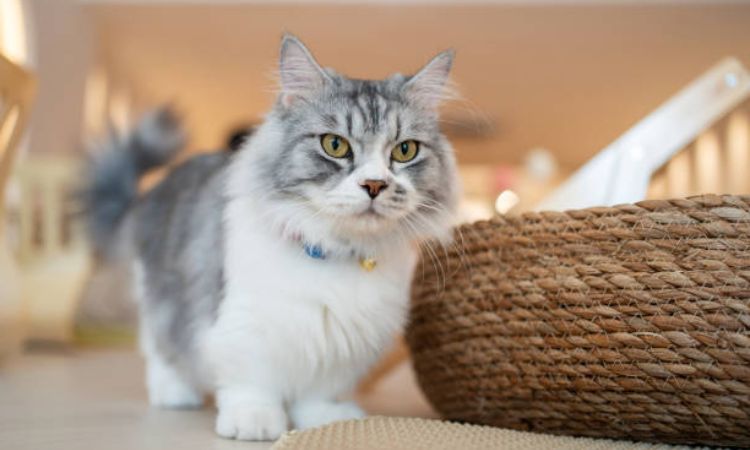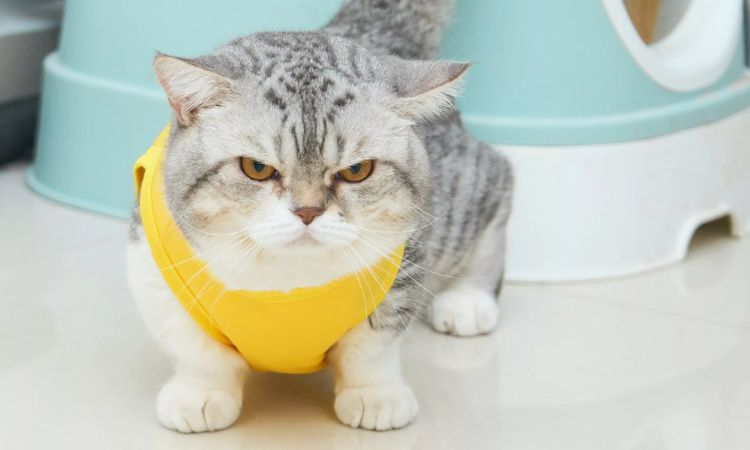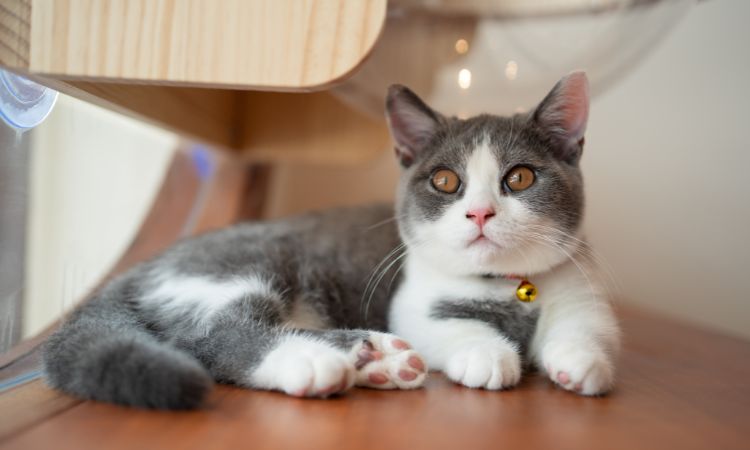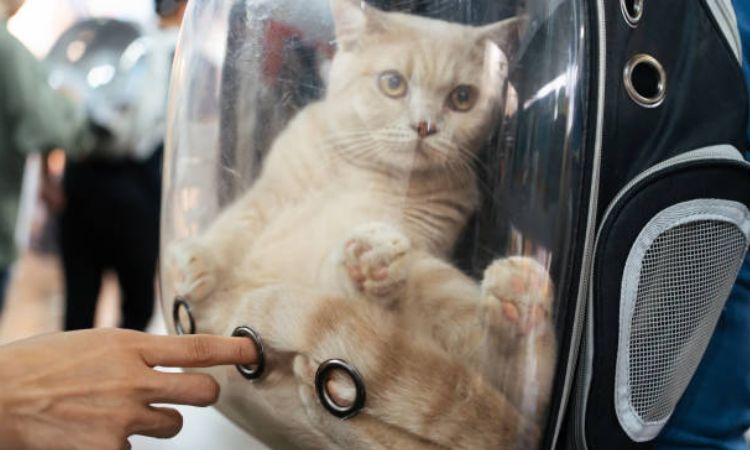With their stubby little legs and spirited personalities, Munchkin cats look like the feline equivalent of a playful toddler on tiny stilts. Don’t let their short stature fool you these pint-sized acrobats are full of energy, curiosity, and charm.
But before welcoming one into your home, it’s important to understand what makes them unique, how healthy they are, what potential health concerns to watch for, and what life with a Munchkin really looks like.
Munchkin Cat Lifespan and General Health

Expected Lifespan
Munchkin cats typically live 12 to 15 years, which aligns with the lifespan of many other domestic cat breeds. With attentive care, some may even surpass this range, enjoying a healthy, active life well into their late teens. Several factors influence their longevity, including:
- Diet: Providing a balanced, nutrient-rich diet appropriate for their age and activity level helps maintain optimal health and supports joint function.
- Exercise: Regular play and physical activity help prevent obesity, strengthen muscles, and keep their joints healthy.
- Living Environment: Indoor-only cats tend to live longer than outdoor cats due to reduced exposure to accidents, infectious diseases, and environmental hazards.
- Veterinary Care: Routine check-ups, vaccinations, dental care, and early detection of health issues all contribute significantly to a Munchkin’s lifespan.
Activity and Mobility
Despite their short legs, Munchkin cats are energetic, agile, and playful. They can run, climb, and explore their surroundings with surprising speed and coordination. While they are not able to make high leaps like long-legged cats, their unique body structure allows them to execute quick, tight maneuvers that larger or taller cats may struggle with.
- Debunking Myths: Some people assume that Munchkins are limited in mobility or prone to chronic back problems, but these cats generally maintain healthy activity levels throughout their lives. Their short legs do not inherently compromise running or play behavior.
- The “Ferret” Movement: Munchkins often exhibit a distinctive low-to-the-ground, elongated gait when moving, sometimes likened to the nimble, slinking movement of a ferret. This style of movement allows them to navigate tight spaces, turn sharply, and remain remarkably agile despite their dwarfism.
Overall, with proper care, Munchkin cats enjoy a healthy, active life, and their short legs rarely hinder their playful and curious nature.
Common and Breed-Specific Munchkin Cat Health Issues
1. Genetic Origins and Their Impact on Health
The hallmark feature of a Munchkin cat—its short legs—is caused by chondrodysplasia, an autosomal dominant genetic mutation that affects cartilage and bone development. While this trait defines the breed, it can also influence joint and skeletal health over time. Mating two standard Munchkins carries a 25% risk of non-viable embryos, highlighting the careful breeding required to maintain the breed responsibly.
2. Joint and Skeletal Concerns
Osteoarthritis is the most commonly cited issue associated with Munchkins. The shortened limbs and slightly elongated spine can place extra strain on joints, particularly the front legs, hips, and spine. While not all Munchkins develop arthritis, signs to watch for include:
- Reduced mobility or reluctance to jump
- Stiffness after rest
- Limping or favoring a limb
Early detection and veterinary intervention—through anti-inflammatory medications, joint supplements, or controlled exercise—can help maintain mobility and quality of life.
Lordosis and pectus excavatum are less common but possible. Lordosis refers to an exaggerated inward curvature of the lower spine, while pectus excavatum is a chest deformity where the sternum appears sunken. These conditions vary in severity and may require monitoring or veterinary treatment if they affect breathing or movement.

3. General Feline Health Issues
Munchkin cats are susceptible to many of the same health concerns as other domestic cats. These include:
- Gastrointestinal issues such as vomiting or diarrhea
- Dental disease, including tartar buildup and gingivitis
- Ear infections (otitis)
- Anemia or other blood disorders
Routine veterinary care, a balanced diet, and preventive treatments like flea and heartworm control help reduce the risk of these conditions.
4. Breed-Specific Considerations
Unlike dogs with short legs, Munchkins generally do not suffer from severe spinal problems or dwarfism-related mobility restrictions. However, their jumping ability is often limited, and they may need help reaching higher surfaces or using litter boxes and feeding stations with lower access.
Additionally, Munchkins with Persian ancestry—such as the Minuet or Napoleon crosses—may inherit risks like polycystic kidney disease (PKD). Genetic testing is recommended for breeding cats to prevent passing these conditions to offspring.
5. Supporting a Healthy Life for Your Munchkin
- Weight management: Keeping your Munchkin at a healthy weight reduces stress on joints.
- Regular exercise: Provide toys and playtime to maintain muscle strength without overstraining limbs.
- Grooming: Long-haired Munchkins need daily brushing to prevent mats; short-haired varieties should be groomed weekly.
- Veterinary checkups: Annual exams, vaccinations, and dental care are essential to prevent or manage issues early.
6. Signs That Require Immediate Veterinary Attention
- Sudden changes in mobility or activity level
- Persistent vomiting, diarrhea, or appetite loss
- Labored breathing or chest deformities becoming symptomatic
- Noticeable swelling, limping, or signs of pain
Prompt attention can prevent minor issues from becoming serious health problems.
What Prospective Buyers Need to Know
The Ethical Debate and Breed Recognition
Munchkin cats have sparked ongoing ethical discussions within the cat breeding community. Major cat associations such as the Cat Fanciers’ Association (CFA) and the Governing Council of the Cat Fancy (GCCF) in the UK refuse to recognize the breed due to welfare concerns. Critics argue that selectively breeding for extremely short legs may predispose cats to skeletal, spinal, and joint issues, raising questions about the morality of deliberately perpetuating this genetic mutation.
On the other hand, The International Cat Association (TICA) recognizes the Munchkin breed but emphasizes responsible breeding practices. TICA encourages transparency, genetic testing, and careful management of the breed’s unique traits to ensure the health and wellbeing of each cat.
Finding a Responsible Munchkin Breeder
Prospective buyers should prioritize breeders who demonstrate ethical practices and prioritize feline health over aesthetics. Key considerations include:
- Genetic Testing and Health Screening: Reputable breeders perform comprehensive screenings for hereditary issues, including lordosis, pectus excavatum, osteoarthritis, and other joint or spinal conditions.
- Avoiding Munchkin-to-Munchkin Mating: Because the gene responsible for short legs is lethal in homozygous embryos, responsible breeders never mate two short-legged Munchkins together. Instead, they often outcross with non-Munchkin cats to maintain genetic diversity and healthy litters.
- Health History of the Parents: Buyers should request detailed records of the parents’ health, specifically focusing on joint, spinal, and chest conditions, to reduce the risk of inherited problems in kittens.
Questions to ask potential breeders include: “Have the parents undergone genetic testing?” “Are there any known joint or spinal issues in the lineage?” and “What steps do you take to ensure kittens are born healthy and viable?”
Adoption and Rescue Considerations
For buyers interested in providing a home rather than purchasing from a breeder, adoption can be a responsible alternative. Munchkin cats occasionally become available through rescues, shelters, or breed-specific rescue organisations. Adopting a Munchkin offers the advantage of giving a home to a cat in need while avoiding supporting breeders who may prioritize appearance over health.
Prospective adopters should still inquire about the cat’s medical history, any mobility limitations, and care requirements specific to their short-legged body structure. With proper attention and veterinary care, rescued Munchkins can lead happy, healthy lives in loving homes.

Care and Prevention for a Healthy Munchkin
1. Maintaining Joint and Spine Health
Because Munchkins have shortened limbs due to a genetic mutation, they can be prone to joint stress, osteoarthritis, and spinal conditions like lordosis. To minimize risk:
- Encourage moderate exercise to maintain muscle tone without overloading joints.
- Provide low-entry cat trees, ramps, or steps for climbing to reduce jumping strain.
- Consider veterinary-recommended joint supplements, especially for older cats.
- Monitor mobility closely—hesitation to jump, reluctance to climb, or limping may indicate pain.
2. Diet and Weight Management
Keeping a Munchkin at a healthy weight is critical, as even a small increase in body mass can strain their spine and joints. Best practices include:
- Feeding high-quality, life stage-appropriate food approved by the Association of American Feed Control Officials (AAFCO).
- Offering measured meals 2–3 times per day rather than free-feeding to prevent obesity.
- Incorporating wet food to support hydration and dry kibble to maintain dental health.
- Consulting your veterinarian for portion adjustments and possible joint-support supplements.
3. Routine Veterinary Care
Regular check-ups are essential to catch health concerns early:
- Annual or biannual exams for young cats, increasing frequency as they age.
- Early screening for congenital conditions such as pectus excavatum or lordosis.
- Monitoring for common issues like gastrointestinal problems, periodontal disease, and anemia.
- Vaccinations, parasite control, and dental care according to standard feline protocols.

4. Grooming and Hygiene
While Munchkins generally have low-maintenance coats, proper grooming ensures comfort and prevents skin or coat problems:
- Brush weekly for short-haired Munchkins and daily for long-haired varieties.
- Check and clean ears if debris or odor appears.
- Monitor eyes for discharge or cloudiness.
- Bathe only when necessary to control shedding or dirt accumulation.
5. Environmental Enrichment
Munchkins are playful, intelligent, and social cats. A stimulating environment keeps them healthy mentally and physically:
- Provide a variety of toys that encourage movement and hunting instincts.
- Include scratching posts and low climbing structures.
- Rotate toys regularly to maintain engagement.
- Ensure companionship—either from humans or other pets—to prevent boredom and stress.
6. Preventive Lifestyle Measures
- Avoid breeding two Munchkins together due to the lethal gene factor.
- Keep them indoors or in secure outdoor spaces to reduce risk of accidents or injury.
- Monitor weight and activity levels, especially if arthritis or mobility issues develop.
By combining attentive care, proper nutrition, safe play, and routine veterinary oversight, Munchkin cats can enjoy a long, active life while minimizing risks associated with their short-legged physique. Responsible pet ownership ensures your Munchkin remains a playful, loving companion for years to come.






